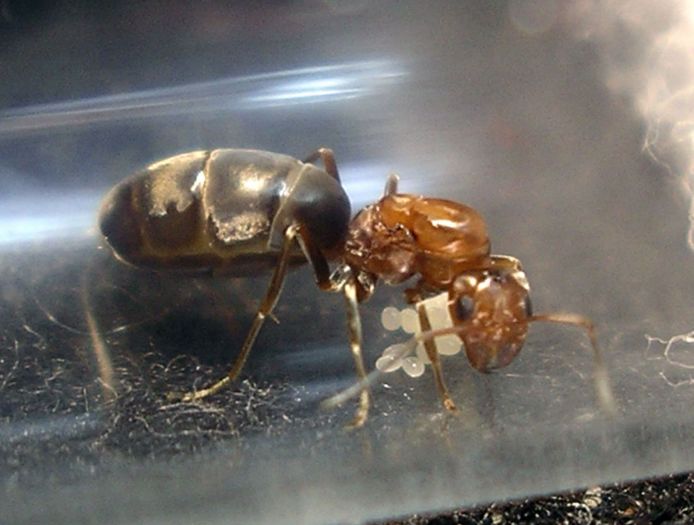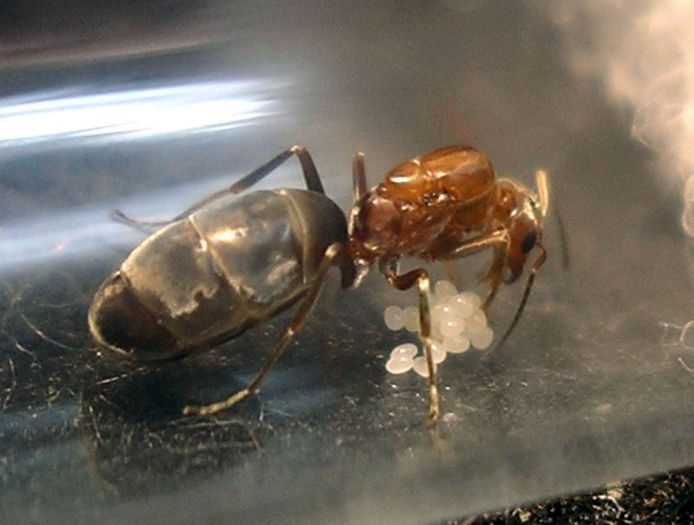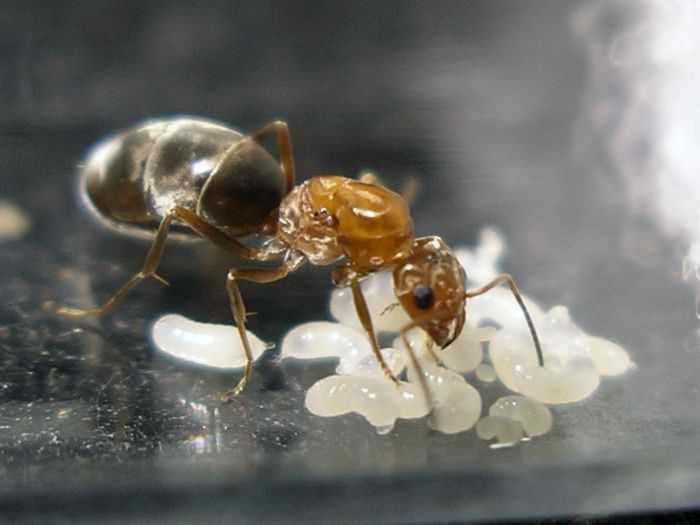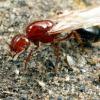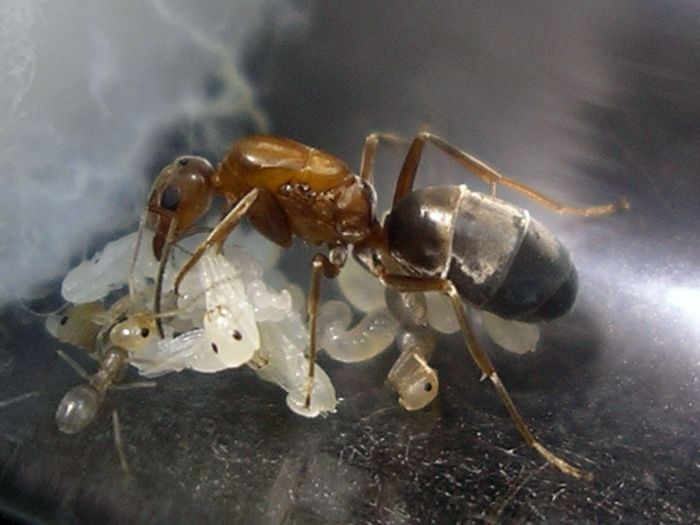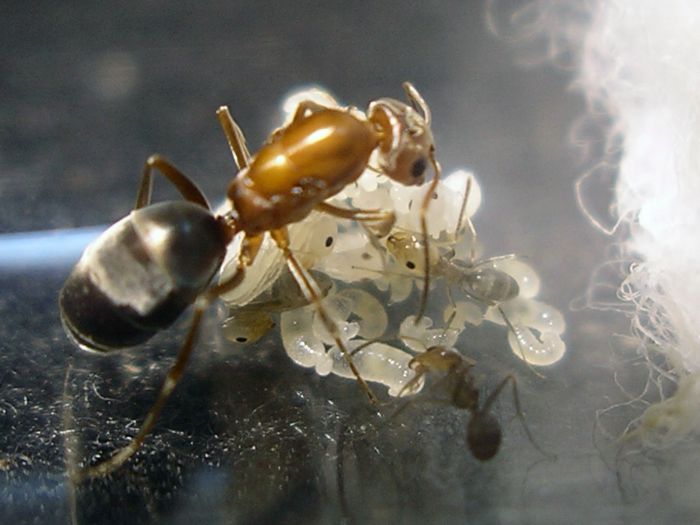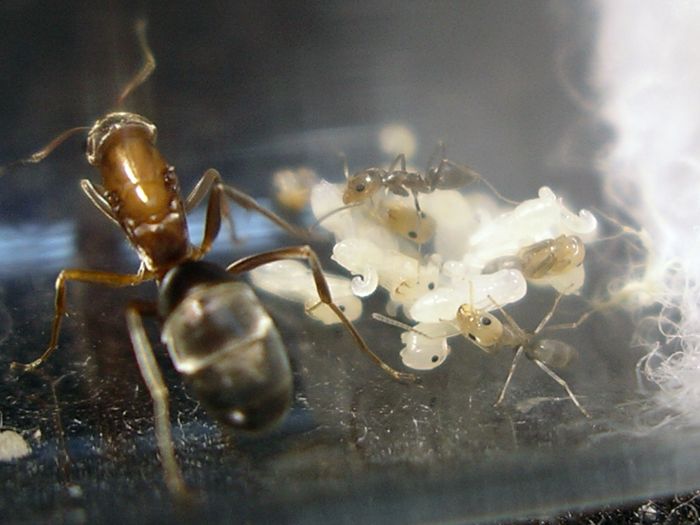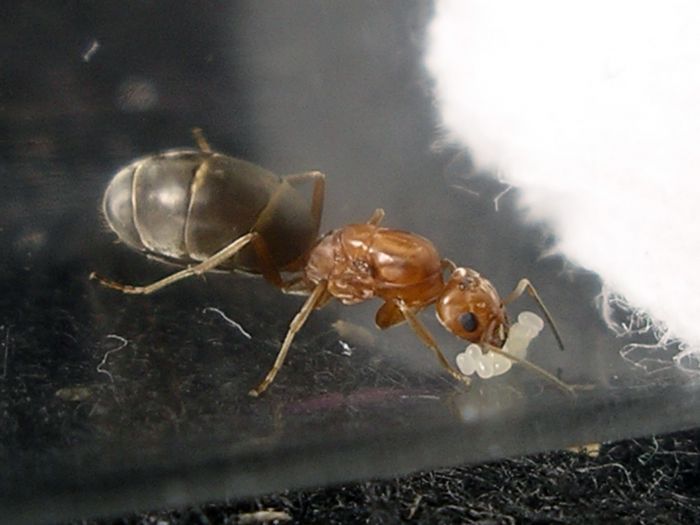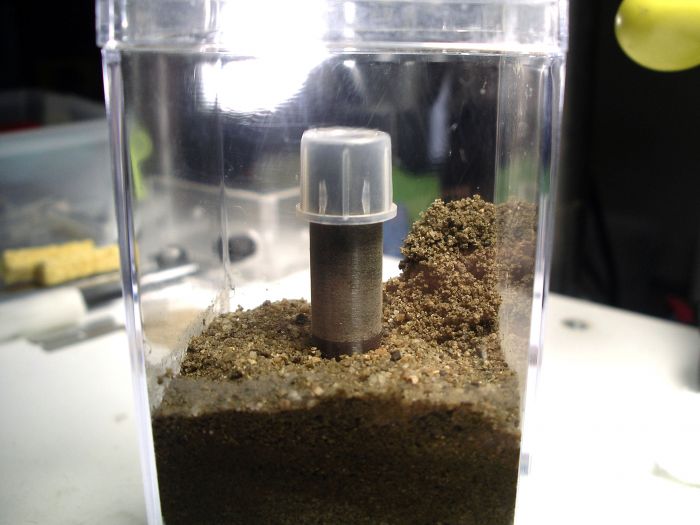Species: Dorymyrmex sp.
Date collected: 8-4-2014.
Location collected: Near Joshua Tree National Park, California.
Collection method: Found wandering around.
I found tons of these Dorymyrmex sp. alates on my black light earlier, but none of them seem to be fertile. A little later that night I found this dealate wandering around. She started laying eggs a couple days later.
